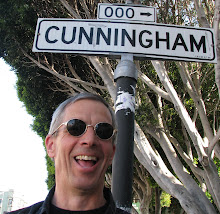Wednesday, September 12, 2012
3D Improvement
It has always struck me as odd that the glorious quilts of the 1800's managed to achieve their glory by remaining entirely two dimensional, while an earnest pursuit of many quilters since has been to achieve a three dimensional effect. Many times the pictorial quilts I see look similar to paint-by-number works of the 1950's and 60's--little shapes filled with bits of solid color. In the last decade, of course, the effects of thread painting, as well as, um, painting, have made quilts look a lot more three dimensional and naturalistic. For those who seek that effect, it is a glorious time to be working.
For me, I have always wanted to make it clear that my quilts were intended to be seen as two dimensional objects, (even though a quilt is technically three dimensional.) In other words, I am making a design on fabric and I want it to be seen as that, not to be seen as a fabric painting.
All that is prelude to the big lips above. One of my top two or three favorite artists of all time, Man Ray, was an all round kind of artist. He is well known as a photographer, and he made his living from both art photography and commercial work. But he was also a painter and sculptor. Man Ray was part of the Surrealists in Paris throughout the 1920's and 1930's. He made many paintings, but his best known painting by far is the one called "A l'Heure de l'Observatoire: les Amoureux," a giant pair of lips spread across a clouded sky.
When I heard this painting and a number of other works were coming to San Francisco for a show, I decided to make my own pair of lips on a quilt, then, to make it my own, to spread a cloud of short bias tape strips over it. One day in my studio, I noticed some red bias strips, and I realized I could double the black strips with the red, in a way that would resemble the 3D effect of movies when you look at them without the special glasses. That way I could ironically point out that I had "improved" l'Heure de la Observatoire by making it 3D.
Hence, "Observatory Time, Improved."
Subscribe to:
Post Comments (Atom)


No comments:
Post a Comment